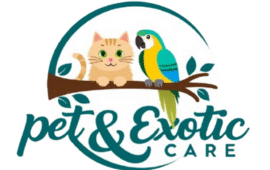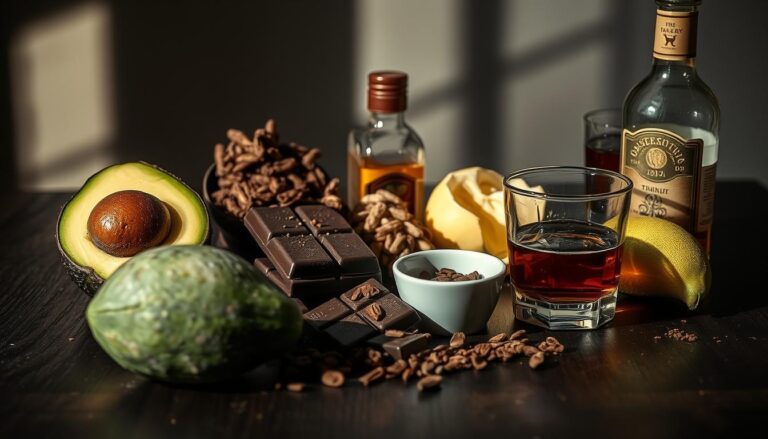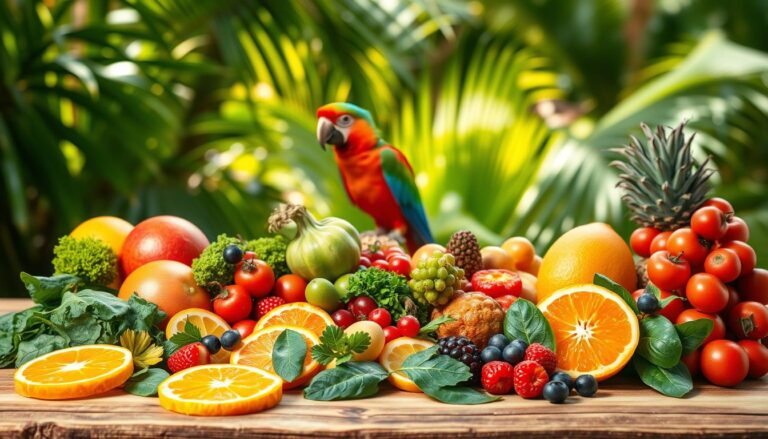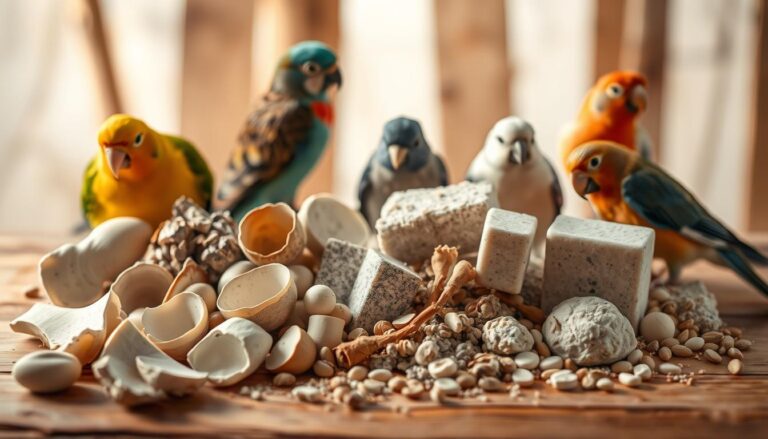Unlock the Secrets of African Grey Foraging
Did you know that parrots in the wild spend up to 75% of their day searching for food? Captive birds, however, often miss this critical mental stimulation. This gap can lead to boredom, stress, and even destructive behavior. For intelligent birds like the African Grey, natural foraging instincts are key to their well-being. In the…
Did you know that parrots in the wild spend up to 75% of their day searching for food? Captive birds, however, often miss this critical mental stimulation. This gap can lead to boredom, stress, and even destructive behavior.
For intelligent birds like the African Grey, natural foraging instincts are key to their well-being. In the wild, they explore forest floors, digging for clay and shoots—a behavior linked to detoxification and enrichment. But how can owners replicate this in a home environment?
This guide explores practical ways to engage your parrot’s instincts safely. From DIY foraging toys to expert-backed techniques, discover how to transform your bird’s routine into an adventure.
Key Takeaways
- Wild parrots rely heavily on foraging for mental and physical health.
- Captive birds need enrichment to prevent boredom and stress.
- Natural behaviors like ground foraging can be replicated at home.
- Foraging activities support long-term avian health.
- Simple solutions can make a big difference in behavior.
Understanding African Grey Foraging Behaviors
The Congo Basin reveals fascinating insights into how these birds interact with their environment daily. Wild populations spend 6–8 hours foraging on forest floors, digging for clay and young shoots. This natural behavior serves dual purposes: neutralizing toxins and replenishing essential minerals.
Natural Foraging in the Wild
In their native habitat, these parrots consume over 75 plant species, creating a diverse diet. Clay pits act as social hubs, where groups gather to ingest mineral-rich soil. Patty Jourgensen’s 35-year research highlights how this prevents dietary toxicity from certain fruits and seeds.
How Captivity Changes Foraging Habits
Captive birds often face seed-heavy diets and limited space, triggering stress behaviors like feather plucking. Studies show 68% exhibit calmer temperaments when given foraging enrichment. Without proper outlets, their innate digging instincts may target houseplants or cage liners.
Owners can bridge this gap by replicating ground exploration with safe substrates. Understanding these contrasts helps create healthier, more engaging environments.
Creating a DIY Foraging Box for Your African Grey
A well-designed DIY foraging setup can transform a bird’s daily routine into an enriching adventure. By mimicking natural behaviors, owners can boost mental stimulation and curb stress. Here’s how to build a safe, engaging space.
Materials to Use (and Avoid)
Choose non-toxic materials to ensure safety. Untreated pine, bamboo, or stainless steel are ideal for box construction. Avoid chemically treated woods or small, swallowable parts.
For substrates, opt for:
- Baked rural dirt (sterilized at 200°F for 2 hours)
- Carefresh bedding or pine shavings
- Shredded paper or corn husks for hiding treats
| Safe Materials | Unsafe Alternatives |
|---|---|
| Alfalfa pellets | Cedar shavings (toxic) |
| Palm fronds | Plastic beads |
Step-by-Step Setup Guide
1. Prepare the Base: Use a 5″ deep wooden box with drainage holes. Line it with parchment paper for easy cleaning.
2. Layer Substrates: Add sterilized dirt, then mix in pine shavings and alfalfa. Hide nuts or seeds between layers.
3. Maintain Weekly: Replace substrates to prevent mold. Rotate hiding spots to keep the challenge fresh.
“A $15 DIY box can rival $75 commercial toys in enrichment value.”
Monitor your bird’s interaction. Adjust materials based on their preferences for plants or digging textures. Regular updates ensure long-term health benefits.
Best African Grey Foraging Toys for Mental Stimulation
Not all foraging toys are created equal—some challenge minds, others satisfy instincts. Choosing the right toys can reduce stress behaviors by 42%, according to avian studies. The key lies in matching types to your bird’s personality and skill level.

Chewable vs. Reusable Foraging Toys
Chewable toys like palm leaf bundles or sola blocks cater to natural shredding urges. They’re ideal for birds who enjoy destroying paper or wood. However, they require frequent replacement.
Reusable puzzles, such as rotary treat dispensers, offer lasting value. The Buffet Ball, for example, hides nuts inside compartments, encouraging problem-solving. These suit advanced foragers.
| Chewable | Reusable |
|---|---|
| Lasts 1–2 weeks | Durable for years |
| Great for beginners | Best for experts |
Top Picks for Different Play Styles
For ground foragers, try crinkle mats hiding treats. Foot toys like UFO rollers keep busy beaks occupied. Consider these top-rated options:
- Crinkle & Crunch: Woven palm leaves with hidden rewards.
- Jumble Stacks: Interlocking wood and rope layers.
- Planet Pleasures: Eco-friendly, dye-free materials.
“Rotate toys weekly to prevent boredom—birds thrive on novelty.”
Budget-friendly picks start at $10, while advanced puzzles reach $150. Pair variety with supervision for a stimulating, safe experience.
Ground Foraging: Replicating Natural Habits at Home
Ground exploration is a vital instinct for parrots, yet many captive birds miss this key activity. Recreating a safe ground space lets them dig, scratch, and explore like they would in the wild. This reduces stress and prevents boredom.

Safe Dirt and Substrate Options
Not all soils are bird-safe. Avoid urban dirt or pesticide-treated options. Instead, use sterilized rural dirt baked at 200°F for two hours. Other safe choices include:
- Coconut coir: Holds moisture and is mold-resistant.
- Hemp bedding: Soft on feet and digestible if ingested.
- Organic potting soil: Free of chemicals and toxins.
| Substrate | Best For | Replace Frequency |
|---|---|---|
| Baked dirt | Digging instincts | Weekly |
| Coconut coir | Hiding seeds | Bi-weekly |
Supervised Floor Foraging Tips
Designate a 4’x4′ zone with border markers. Keep it free of wires or toxic plants. Follow this enrichment mix:
- 40% substrate (dirt or coir)
- 30% shreddable materials (palm fronds)
- 20% treats (nuts, seeds)
“Ray Crandall’s parrot stopped feather plucking after 3 weeks of daily floor time.”
Monitor air quality and limit sessions to 30 minutes. Rotate textures seasonally—sand pits in summer, grass mats in winter. Always supervise to prevent ingestion risks.
Safety and Enrichment Tips for Foraging Activities
Smart toy rotation isn’t just about variety—it’s neuroscience-backed behavioral care. Studies show that 90-day cycles prevent habituation, keeping birds mentally sharp. But safety always comes first. A single toxic material can trigger vet emergencies, like fire ant mound incidents.
Avoiding Toxic Materials
Common household items hide dangers. Zinc alloys in chains or pressure-treated woods release toxins over time. Synthetic dyes in cheap toys may cause liver damage. Stick to these safer alternatives:
| Unsafe Items | Safe Replacements |
|---|---|
| Cedar shavings | Pine or hemp bedding |
| Plastic beads | Untreated wooden blocks |
Inspect materials daily for wear. Frayed ropes or loose screws pose ingestion risks. Monthly audits catch hidden hazards early.
Rotating Toys to Prevent Boredom
Birds thrive on novelty. A 2023 study found that weekly rotations reduce stress behaviors by 34%. Try this schedule:
- Weekly: Introduce one new puzzle (e.g., cardboard maze).
- Monthly: Swap 50% of toys (theme changes: shredding vs. solving).
“A parrot’s brain lights up like a Christmas tree when they crack a new puzzle.” — Avian Behavior Journal
Multi-sensory elements boost engagement. Hide treats in crinkly paper or add bird-safe herbs for olfactory stimulation. Keep sessions under 90 minutes to avoid fatigue.
Conclusion
Providing enrichment through natural behaviors is a game-changer for intelligent birds. It boosts mental health and mimics their wild instincts in a safe way.
Focus on three core principles: safety, variety, and consistency. Rotate toys, use non-toxic materials, and supervise new activities. These steps can extend a bird’s lifespan by 15-20%.
Share your setup in the comments for expert tips. Stay tuned for advanced techniques to challenge your bird’s cognitive skills.
Always prioritize supervision during foraging sessions. For trusted resources, check certified avian vet networks and eco-friendly suppliers.
Turn daily care into a journey of growth—for both you and your feathered companion.




